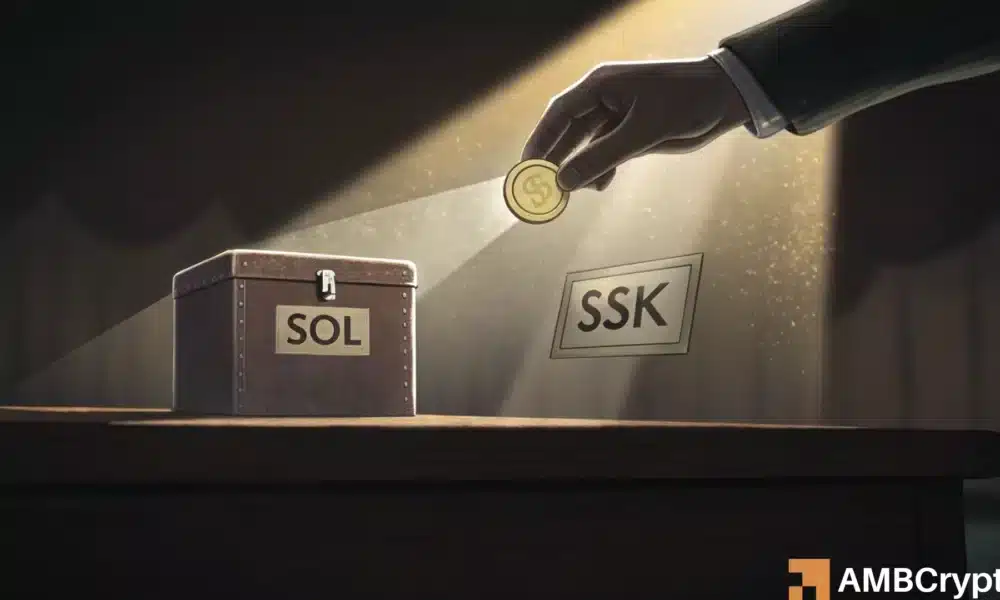Solana’s Staking ETF: A Promising Start with Key Questions Ahead
In the ever-evolving cryptocurrency landscape, Solana has made waves with its newly launched REX-Osprey Solana + Staking ETF (SSK), which opened H2 2025 with remarkable momentum. The ETF garnered an impressive $33 million in trading volume on its first day, closing at $25.85—a notable increase of 1.5% from its opening price. What makes SSK particularly compelling is that it directly holds approximately 234,743 SOL tokens, which constitute about 55.02% of its total portfolio. By actively staking these tokens within the Solana network, the ETF generates an attractive annual yield of 7.3% for its investors.
The success of SSK on its debut day is particularly noteworthy when compared to traditional spot products. It outperformed the launch-day trading volumes of both SOL and Ripple (XRP) futures ETFs, signaling a shift in investor interest. While typical ETFs offer mere price exposure, the SSK uniquely converts investor inflows into staked SOL, thus producing real yield. This innovative approach creates a powerful investment cycle: increasing inflows lead to more staking, which subsequently drives higher yields and attracts further investments.
However, despite the initial excitement surrounding SSK’s launch, its debut trading volume pales in comparison to the billions typically logged by Bitcoin (BTC) and Ethereum (ETH) spot ETFs. This disparity raises an essential question: can Solana’s staking-based market structure scale up to match the depth and liquidity of the established leader coins? While the enthusiasm is palpable, the underlying market dynamics warrant closer scrutiny.
Staking represents a conviction-driven approach to investing. It involves locking assets with the belief in prolonged network growth, thus distinguishing it from short-term speculative trading. SSK’s model converts passive exposure to SOL into an active yield-generating vehicle, which is attractive to yield seekers. However, it’s essential to note that these yields are distributed in SOL. This means that if Solana’s price remains stagnant or declines, the real returns may diminish significantly. Given that SOL is currently nearly 50% below its all-time high of $294, there are real concerns about whether the yields can compensate for stagnant or falling token values.
The muted market response to the SOL token—only a 3.67% price increase following SSK’s launch—suggests underlying weaknesses in the spot market. This raises critical questions about the effectiveness of current staking yields as a hedge against price depreciation. If staking does not deliver inflation-adjusted returns, SSK’s impressive debut could be more indicative of speculative rotations rather than a true commitment of capital. It risks generating significant trading volume without effectively supporting any lasting price momentum for Solana.
As the staking and yield generation model gains traction, the future of Solana’s staking ETF will hinge on its ability to foster genuine commitment from investors. Will SSK serve merely as a transient interest, or can it help deepen the Solana ecosystem and attract long-term capital? How the market responds to these questions will determine whether Solana can establish itself as a prominent player alongside Bitcoin and Ethereum in the crypto space. The coming months will be crucial for assessing the depth and resilience of the staking-driven market structure that Solana is banking on for its growth trajectory.


